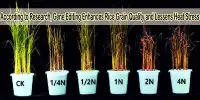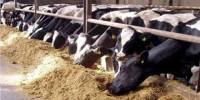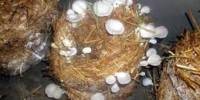A study conducted by José Manuel Guerra Garca, professor at the Department of Zoology of the Faculty of Biology at the University of Seville, and published in the journal Marine Environmental Research reveals that gilt-head sea bream farmed in estuaries in the Bay of Cadiz exhibit many characteristics in common with wild gilt-head sea bream.
Aquaculture, as defined by the Food and Agriculture Organization of the United Nations (FAO), is the practice of growing aquatic organisms in their natural habitat.
The cultivation of organisms that grow in aquatic environments (fish, mollusks, crustaceans, and algae) and that are beneficial to humans is another definition of aquaculture. Thus, the maritime environment might develop into a prime location for resource exploitation.
In a world where fish supplies are overfished, aquaculture is flourishing and will guarantee future fish and seafood consumption.
National and international guidelines aim to produce crops that are more environmentally sustainable due to the sector’s rising importance. Accordingly, the researchers suggest that estuaries are very valuable ecosystems that are ideal for the production of crops that are considerate of and consistent with conservation. Fish thrive in estuaries’ favorable environments and can eat the small invertebrates that naturally flourish there, primarily crustaceans.
A study that focuses on gilt-head sea bream’s diet
Scientists’ work has focused on the trophic characterization of their diet (through the study of prey found in stomach contents and rigorous stable isotope analysis), as well as on the quantification of heavy metal concentrations in gilt-head sea bream (Sparus aurata).
The findings demonstrate that gilt-head sea bream in large estuaries have an exceptionally varied diet, with a focus on decapod crustaceans. Additionally, the isotopic profile has a high trophic amplitude and is comparable to that found in wild gilt-head sea bream in the Bay of Cádiz.
Furthermore, the levels of heavy metals in fish in estuaries are within the legal thresholds established by regional, national, and global legislation, ensuring safe consumption.
The estuaries of Cadiz, the best home for fish
One of the most significant coastal wetlands in Europe is represented by the estuaries, salt marshes, and marshlands of the Bay of Cadiz. These habitats are ideal for the development of fish farming in an environmentally conscious way since they combine tradition, gastronomy, and protection of flora and wildlife.
The development of quality seals, such as the “Pescado de Estero” brand, is necessary to promote this product.
Scientists like José Manuel Guerra suggest that the appropriate authorities must emphasize the significance of estuaries. This knowledge is essential not only to stop their extinction but also to turn them into a significant source of local economic resources by raising high-quality fish.
















